| Columns Retired Columns & Blogs |
DeVore Fidelity Silverback Reference loudspeaker Measurements
Sidebar 3: Measurements
My estimate of the DeVore Silverback Reference's voltage sensitivity was slightly but insignificantly below the manufacturer's specification, at 89.5dB(B)/2.83V/m, which is still usefully higher than average. With the rear-panel switch in the Direct position, the impedance magnitude remained at or above 6 ohms across almost the entire audioband (fig.1), with a generally low electrical phase angle. This speaker is definitely an easy load for an amplifier to drive. With the switch in the Home Theater position, the impedance is significantly different below 500Hz or so (fig.2). The rising trend below 100Hz is presumably due to the insertion of a series capacitor to prevent woofer overload on movie explosions. (John DeVore tells me that there are also changes to the midrange/woofer crossover.) While the phase angle is now large in the bass, the impedance magnitude is sufficiently high that there will be no drive problems.
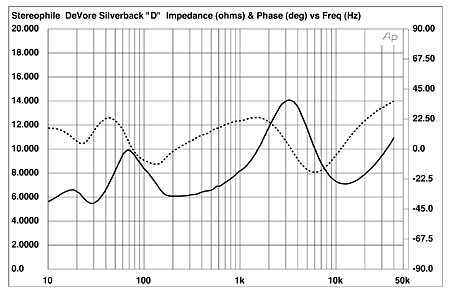
Fig.1 DeVore Silverback Reference, Direct, electrical impedance (solid) and phase (dashed). (2 ohms/vertical div.)
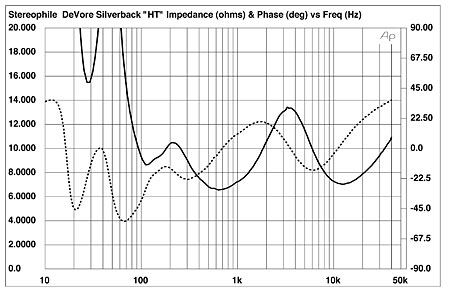
Fig.2 DeVore Silverback Reference, Home Theater, electrical impedance (solid) and phase (dashed). (2 ohms/vertical div.)
There are some small wrinkles in the impedance traces that imply the presence of some panel resonances. I did find the Silverback's enclosure to be quite lively. Fig.3, for example, shows a cumulative spectral-decay plot calculated from the output of a plastic-tape accelerometer fastened to the speaker's front baffle 12" from the floor. A fairly strong mode can be seen at 330Hz, and this mode was also detectable on the side panels. The strongest mode I found, at 580Hz, was also present on the side panels (fig.4). Will this behavior give rise to audible problems? Michael Fremer did note that John DeVore has tuned the cabinet's resonances toward a specific goal, but didn't comment on any midrange congestion that might result from the presence of these resonant modes. It's possible, therefore, that these modes are high enough in frequency and low enough in level not to be excited with the speaker playing music rather than test tones.
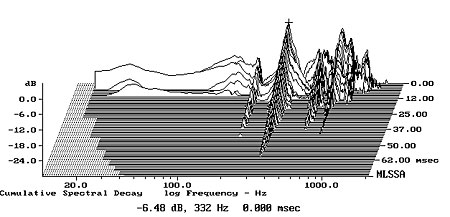
Fig.3 DeVore Silverback Reference, cumulative spectral-decay plot calculated from the output of an accelerometer fastened to the front baffle 12" from the base (MLS driving voltage to speaker, 7.55V; measurement bandwidth, 2kHz).
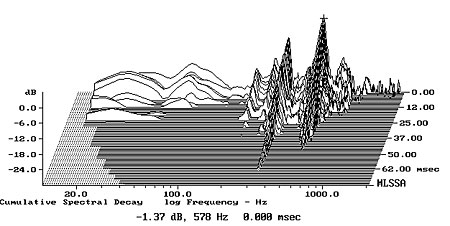
Fig.4 DeVore Silverback Reference, cumulative spectral-decay plot calculated from the output of an accelerometer fastened to the cabinet's side panel 12" from the floor (MLS driving voltage to speaker, 7.55V; measurement bandwidth, 2kHz).
To the left of fig.5 are shown the nearfield responses of the Silverback's midrange unit (blue trace), woofers (red), and port (green) with the speaker set to Direct. The midrange unit actually extends quite low in frequency in this mode—to 150Hz or so—before beginning a second-order rollout. The woofers show the usual reflex notch at 29Hz, the frequency at which the port has its maximum output, and their response extends up to 200Hz before beginning its slow rollout, overlapping the output of the midrange unit for almost an octave. Peculiarly, the port's output has a second peak, between 100Hz and 200Hz, but this is well down in level. In Home Theater mode (not shown), the midrange unit begins its lowpass rolloff higher in frequency, as does the woofer's high-pass rolloff.
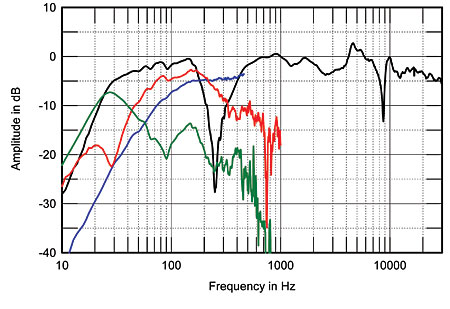
Fig.5 DeVore Silverback Reference, Direct, anechoic response on tweeter axis at 50", averaged across 30° horizontal window and corrected for microphone response, with the nearfield responses of the midrange unit (blue), woofers (red), port (green), and their complex sum (black) plotted below 400Hz.
Once I have a speaker mounted on a high stand in my yard to perform the farfield acoustic measurements, the first test I perform, before calculating the sensitivity, is to examine the power response on the tweeter axis. When I did this for the Silverback, set to Direct, I was puzzled to find a lack of energy in the lower midrange. When I added the individual nearfield responses in fig.5, taking into account acoustic phase and the differences in the distances of the port, woofers, and midrange unit from a nominal farfield point, a large suckout developed between 150Hz and 450Hz (fig.5, black trace). While not as deep as the suckout I found in the farfield power response, this calculated nearfield response indicates that something is not optimal in the Silverback's midrange/woofer crossover in Direct mode. (The suckout was absent in the calculated response in Home Theater mode.)
To investigate this behavior, fig.6 shows the nearfield step responses of the midrange unit (red trace) and one of the woofers (blue). The latter is delayed by 1ms, because its mounting on the Silverback's side will delay its farfield output on the tweeter axis by approximately that time. While both units are connected in positive acoustic polarity, the delay and the slower risetime of the woofer's step results in its positive rise away from the time axis coinciding with the negative-going portion of the midrange unit's step, hence the cancellation. In-room, things will not be so clear-cut because the output of the woofers will be affected by the room's acoustic.
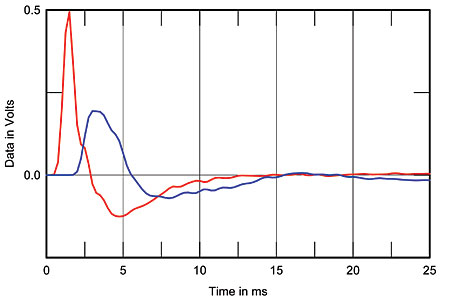
Fig.6 DeVore Silverback Reference, Direct, nearfield step responses of midrange unit (red) and woofers (blue), the latter delayed by 1ms (25ms time window, 1kHz bandwidth).
To the right of fig.5 is shown the Silverback's farfield response in Direct mode, averaged across a 30° horizontal window on the tweeter axis. A slight lack of energy in the presence region is followed by a narrow peak, then by a sharp notch, with then a slightly shelved-down output in the top octave. The peak is probably responsible for MF finding the Silverback's treble to sometimes sound "a bit forward or 'hashy,' " but this is also something that will be altered in a room.
Fig.7 shows the Silverback's horizontal radiation pattern, with the off-axis responses normalized to the response on the tweeter axis so that just the changes can be seen. The first thing to note is that there is more energy off-axis at the frequencies of the two on-axis suckouts, in the lower midrange and the mid-treble, confirming that these are indeed interference effects. Second, the speaker's dispersion narrows a little in the region where there is an on-axis treble peak, which is probably why MF was only occasionally bothered by its presence. Fig.8 shows the Silverback's vertical dispersion. The speaker is quite critical regarding ear height, with suckouts developing immediately below and more than 5° above the 36"-high tweeter axis. This will also lead to a lack of energy in the room's reverberant field in the region of the on-axis peak, again reducing its audibility.
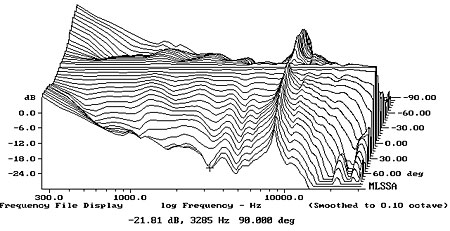
Fig.7 DeVore Silverback Reference, Direct, lateral response family at 50", normalized to response on tweeter axis, from back to front: differences in response 90–5° off axis, reference response, differences in response 5–90° off axis.
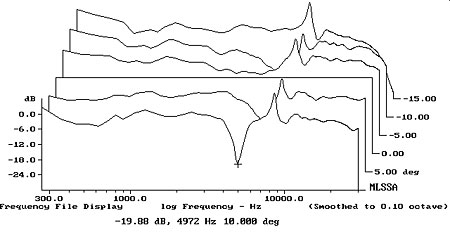
Fig.8 DeVore Silverback Reference, Direct, vertical response family at 50", normalized to response on tweeter axis, from back to front: differences in response 15–5° above axis, reference response, differences in response 5–10° below axis.
I have commented several times in this review that whether or not the measured behavior will be audible will depend on the room in which the speaker is used. Fig.9 shows the spatially averaged response of the Silverbacks in MF's room, taken in Direct mode—Mikey didn't audition the speakers in HT mode—with the microphone placed for the left and right speakers individually in a grid centered on the position of MF's ears. The response is commendably even above 400Hz, with no trace of the treble suckouts and peaks. As I surmised, the Silverback's radiation pattern does indeed ameliorate its on-axis behavior. I am not surprised that Michael overall liked how the DeVore speaker performed. The bass is also well extended. But other than the 160Hz band, the lack of integration between the midrange unit and the woofers is still in evidence, and I do note that MF found that the Silverback's upper bass sounded "a bit lean."
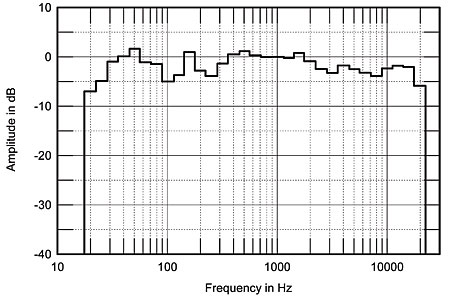
Fig.9 DeVore Silverback Reference, Direct, spatially averaged, 1/3-octave response in MF's listening room.
In the time domain, the DeVore's step response on the tweeter axis in Direct mode (fig.10) reveals that the tweeter is connected in the same positive polarity as the midrange unit, with the slower, positive-going rise of the woofers partially overlaying the negative-going part of the midrange's step, as inferred from fig.6. The Silverback's farfield cumulative spectral-decay plot (fig.11) reveals delayed energy at the frequencies of the on-axis suckouts, as expected, but also at the center frequency of the treble peak. As this is in the region where the human ear is most sensitive, I would expect the Silverback to sound somewhat intolerant of recordings and components that are themselves a little bright.
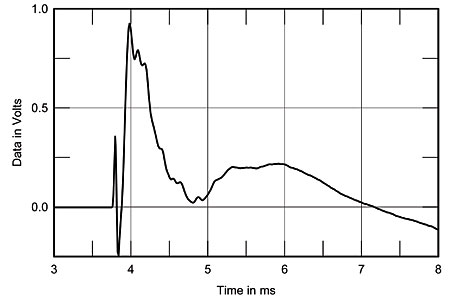
Fig.10 DeVore Silverback Reference, Direct, step response on tweeter axis at 50" (5ms time window, 30kHz bandwidth).
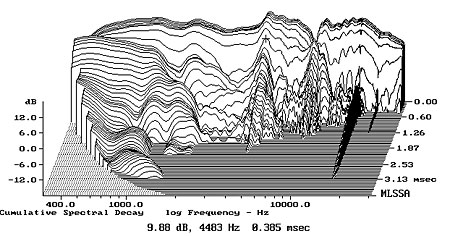
Fig.11 DeVore Silverback Reference, Direct, cumulative spectral-decay plot at 50" (0.15ms risetime).
Overall, I was disappointed by the DeVore Silverback Reference's measured performance. Yes, it appears to be the result of a careful balancing of different aspects of sound quality, and Michael Fremer very much liked that balance. It also offers excellent bass extension and an even response in-room throughout the midrange and treble. But the low-frequency crossover in particular seems suboptimal, and whether or not this becomes a significant factor subjectively will depend very much on the room. In general, the larger the room and the farther away the listener sits, the more likely the Silverbacks' owner will get a fully fleshed-out upper-bass region.—John Atkinson
- Log in or register to post comments




































